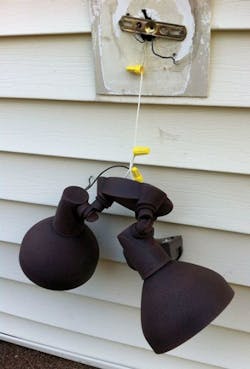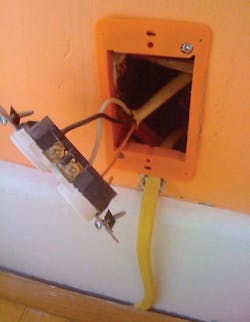Hint: Fixture flop
January Winners
This installation makes “real” electricians cringe. Section 300.15 requires a box to be installed where NM cable has an outlet, switch, conductor splice point, or termination point. These wires were just stuffed into the wall cavity with no protection. Section 406.5 requires receptacles to be installed in identified boxes or assemblies. This low-voltage “ring” does not meet the definition of a box. It is intended to be used for low-energy Class 2 circuits, or communication-type circuits, and should not have been used to secure this receptacle to the wall. Using it in this manner violates the rules of Sec. 110.3(B). In addition, Sec. 334.15(B) requires protection for the NM cable where it passes through the floor. The cable could have been protected by enclosing it in rigid metal conduit, intermediate metal conduit, electrical metallic tubing, Schedule 80-type PVC conduit, RTRC-XW conduit, or other approved means extending at least 6 in. above the floor.






